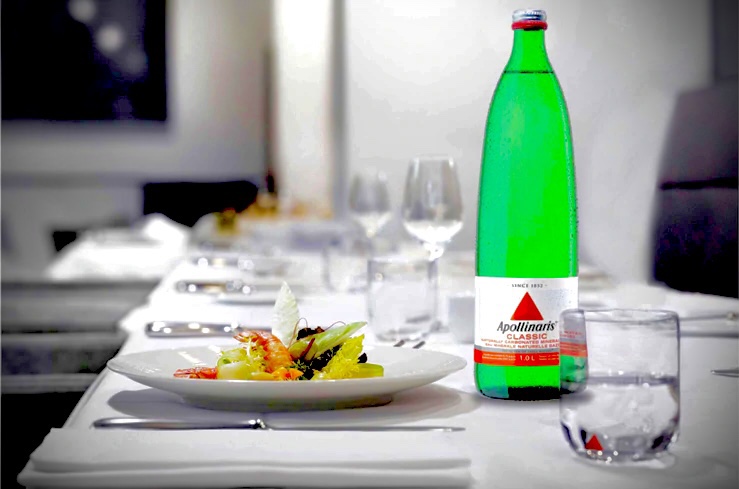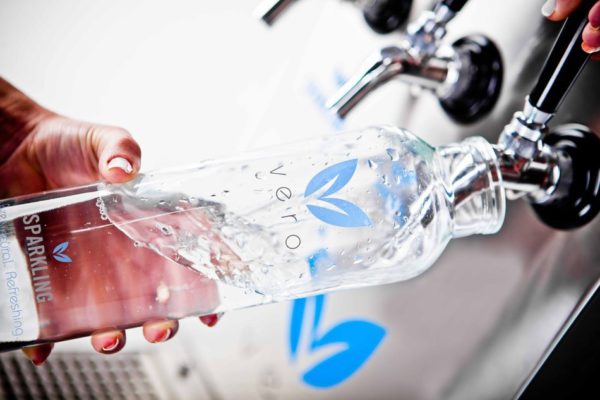If you had Tom Colicchio hawking NFT pizzas on your 2021 bingo card, let me be the first to congratulate you. Chefs endorsing products is hardly new, but historically they tend to promote legacy brands, copper-clad cookware or trusted names in kitchen appliances, over more speculative commodities. A chef without a reputation is just a cook. What does that make a chef who cooks virtual food?
Throughout his career, Colicchio has a distinguished track record of charitable giving and activism, but he certainly hasn’t shied away from opportunities to profit from his likeness since Bravo’s Top Chef, now in its 18th season, hit the airwaves. He pops up on my Facebook feed regularly shilling for a line of frozen prepared foods from a company called Ipsa.
Through his work with the Independent Restaurant Coalition, which he co-founded, Colicchio’s played an active role in mobilizing federal support for restaurants impacted by the pandemic. In that time, he’s worked closely with politicians like Chuck Schumer to bring awareness to the plight of the restaurant industry and used his platform to advocate policy changes that help struggling small businesses.
But his battle cries for independent restaurants have gone silent lately and curiously replaced with techno-babble designed to appeal to crypto investors and NFT collectors. Ahead of launching a business venture called CHFTY Pizzas with former Top Chef contestant Spike Mendlesohn, Colicchio’s been using his Twitter feed to convey (what he would like us to believe is) a budding interest in NFTs.
What’s unclear is who convinced Tom to sacrifice his reputation to stump for NFTs, and how much they’re paying him to join the crusade. Also, why would he be so willingly to slough off his reputation, built over years going back to his days at Gramercy Tavern to peddle potentially worthless crypto-paraphernalia? The simple answer is money. Colicchio will eventually abdicate his throne on Top Chef and bass-fish away his remaining years on the North Fork of Long Island somewhere. Is this NFT hustle his Ocean’s Eleven? One last big con before he hangs up his cleaver for good?
These days, PR and digital marketing are clever when it comes to concealing the commercial interests of their spokespeople, blurring the lines between endorsers and influencers. This makes it more difficult to detect whether someone is being paid to promote a product or paid to pretend they value the product organically to influence consumer behavior without the nuisance of a traditional advertisement. The latter requires a credible backstory to make it more potable. In this case, Colicchio was deliberate in announcing his NFT venture after weeks of calculated hash-tagging and tweeting about the potential of NFTs to avoid arousing any suspicion. The food media barely noticed until his silly crypto pizzas started popping out of the oven.
Even in the most flattering light, it’s impossible to see Colicchio’s interest in NFTs as anything other than a new revenue stream for Tom, Inc.. To be fair, that doesn’t make him any more evil than, say, the Winklevii, Gary Vaynerchuck, or Beeple either. He has a right put his name on whatever products he pleases, whether it’s a physical spatula or a spatula in the metaverse.
But skepticism is warranted about the staying power of NFTs given the sheer number of unicorn investments that have swooned and crashed in the Digital Age. Markets have become increasingly manic as euphoria overrides reason, exacerbated by rapidly advancing technology—the “flash crash,” Reddit trader mobs, meme trades, and the countless pump-and-dump schemes with dubious alt-coins like Dogecoin.
Early adopters of cryptocurrency have certainly been rewarded for their faith, but does anyone truly believe that Shiba Inu coins or Crypto Punk NFTs are a more stable long-term investment than shares of established tech companies like Amazon or Google? Bitcoin plummeted nearly $10,000 USD in one hour last weekend, and, despite its meteoric rise, it’s still one of the most fragile places to park your money.
The soaring value of crypto is driven more by FOMO than fundamentals and, like most other flimsy get-rich schemes, the harder they come, the harder they fall. The banker bros driving the boat always find a way to jump ship with bags full of money when the hull collapses while everyone else drowns.
Success in the crypto space is predicated on shoving coals into the blockchain fireplace to keep the flame blazing hot. Any signs of smolder can bring down the whole house of cards, potentially creating the biggest Black Swan event the financial world has ever seen. Most crypto bulls and NFT wonks understand this risk and work tirelessly to keep the hype train rolling. They have to, most of them are pot-committed.
There may be genuine merit in leveraging the blockchain for restaurant-related operations like protecting a chef’s intellectual property, ticketing events, cultivating unique culinary experiences, or even payment processing. But using the technology to convince people that digital pizzas are valuable is low-hanging fruit.
The pandemic has spurred deep introspection within the industry about how we should define a chef’s work. There are role models emerging everywhere—like Paola Velez who founded Bakers Against Racism, Edward Lee who started the Lee Initiative to empower BIPOC restaurant workers, and José Andres who’s traversed the globe with his World Central Kitchen feeding communities devastated by natural disasters. The collective soul searching has led to an industry-wide audit, with chefs and restaurateurs placing greater emphasis on fostering healthier workplaces, engendering diversity, and sustaining more ethical business practices.
At this precipice, the restaurant industry needs reliable ambassadors, not snake oil salesmen. Colicchio’s conduct, however benign, undermines the serious work of other chefs. It’s akin to sports heroes behaving in a way that’s “bad for the game.” This assessment is, of course, subjective, but we all have a right to call out chefs for doing things we feel reflect poorly on our industry. From my vantage point, hoodwinking people into buying pizza-themed NFTs is predatory. Based on the response so far, if this is the future of cheffing, a whole lot of people are telling Tom to pack his knives and go.
Aside from his leadership role with the IRC, Colicchio was just recently appointed to the incoming New York City mayor Eric Adams’s food policy transition team as a contributor. Is someone who spends his days convincing his nearly one million Twitter followers to invest in pizza cartoons really the best choice to be a food policy advisor in one of the largest cities in the world? A city where many of its residents can’t afford actual food and whose communities are often victimized by the irresponsible energy consumption that trafficking NFTs propagates?
Chefs are rarely consulted on food policy issues, so when they are we should expect them to give their undivided attention. At the very least, they need to be cognizant of how their personal business decisions reflect on the food and beverage industry as a whole. Of course, times are changing. Chefs must learn to evolve, too, without fear of implementing new technologies or embracing change that will lead the industry forward. But unless you’re floating around in the metaverse, Tom Colicchio dishing out slices of virtual pizza to his adoring fans is nothing more than empty calories.



